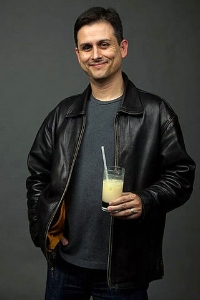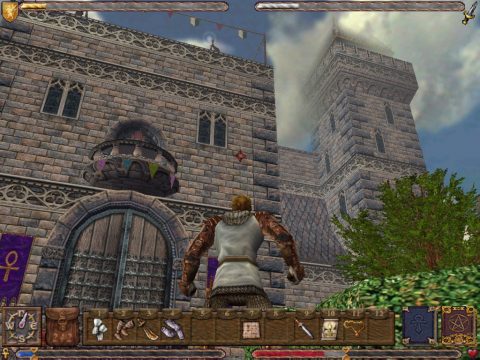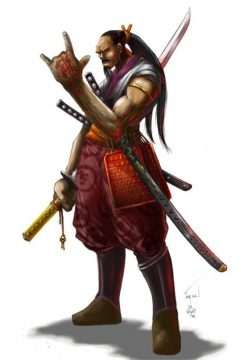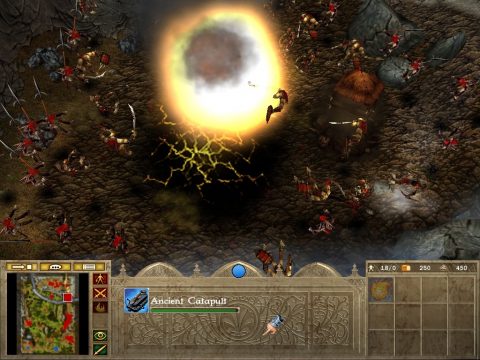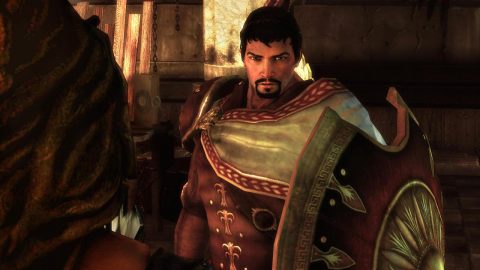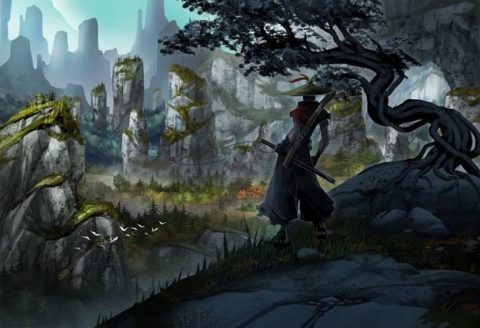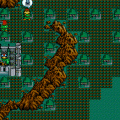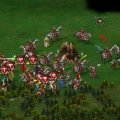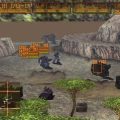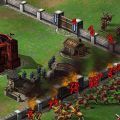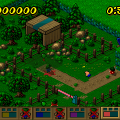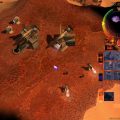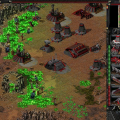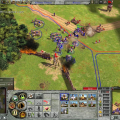Known for his important role in Command and Conquer’s creation, Ed Del Castillo has a very lengthy resume in the video game industry. An avid fan of Real-Time-Strategy, he is the CEO of Liquid Entertainment and the main designer behind Battle Realms.
How did you enter the video game industry?
My freshman year of college I met a group of guys around a Gauntlet machine. We stayed friends and they brought me along with them when they found a job at a little startup game company. I answered phones and took orders at first. 🙂
You have quite an impressive career. Where did you work before creating Liquid?
Thanks. I started at Mindcraft, where I answered phones, then worked my way into design and production. Then I was at Westwood Studios as the Producer of Command & Conquer and Red Alert. Then at Origin where I helped out on Sid Meier’s Gettysburg, Alpha Centauri, and Ultima 9.
I read that Virgin Interactive wasn’t enthusiastic about Command & Conquer. How can that be?
It’s true. They thought it would flop and were always trying to find reasons to shut it down, until it shipped… 🙂
The development of Ultima: Ascension is usually thought as very… chaotic. How did you help the project?
It was a chaotic time. I met Richard Garriott when I was visiting from Baltimore (where I was working with Sid Meier’s group). He confessed he was unhappy with the current design of the game so I told him to send me all the docs. I offered to mark them up with my thoughts in my off hours. If he didn’t like it he could just toss it – but if he liked it, he was free to use anything he wanted. A few days after I sent over my mark ups he called me and asked if I would consider transferring to Austin. He thought that the direction I had suggested in the mark ups was exactly what he wanted for Ultima. A month later I was there. I did my best to sort things out, and the design that Richard and I came up with was awesome, but the team and the executive structure was plagued with political infighting and under-talented people. In short, when I arrived I was told that Richard was being groomed for removal and given 30 days to assess the state of the product. My report found that the tech was several years out of date and the game needed two more years to be an Ultima. I was told that I had six months to ship a Final Fantasy quality game. Suffice it to say that I was gone shortly thereafter and you see where that strategy got them.
How did you end up creating Liquid Entertainment?
Liquid was born of wanting to do things a different and better way. To be flexible and adaptive to the technology and the times. I’d worked with all my gaming heroes, so I figured it was time for me to try on my own.
Let’s talk a bit about the genesis of Battle Realms. The Asian setting was a bold move at the time. Was it a no-brainer or did you think about a more conventional setting for its first project?
For me it was a no brainer. I grew up watching lots of kung fu movies, and was enamored with the thoughts and teachings. I have also always love fantasy settings likeLord of the Rings and The Belgariad, and have been a DM for most of my adolescent and adult life. I wanted to bring the two together with some very exotic characters and good story – Battle Realms was born. As a gamemaster for paper RPGs I’d always enjoyed building my own worlds and adventures and I leaned heavily on that to make the world of Battle Realms.
The story and the setting are pretty fleshed out. While playing the game, I had the feeling that there was more to it than Kenji’s (and Greyback’s) journey. What were your inspirations? How long did you work on the back-story?
I’m always working on the backstory, even now, and there has never been one single inspiration other than it’s a mix of everything that I think is cool. Back then I built out as much of the world as I could starting from the fundamental laws of the universe, in particular, the ones that are different from our world. I think creating these laws is one of the ways to create greater depth in the world because it changes how things work and interact. There is so much to Kenji and Greyback and Zymeth and all the Zen Masters and how the Ninja and Monks work in the world, and the role of Lore and Study, and Focus. All things things don’t really get talked about but influence my thinking about the world and its characters and story. Nowadays, I can look at almost anything and tell you what the Battle Realms version of that would be.
One of the most impressive feats of Battle Realms is the art direction – the animations, the distinctive mix of various Asian designs for each clan. As an art director, how did you reach such diversity for the clans?
There is no magic to this, just hard work and looking for something with the right combination of unique and familiar. Depending on the artist I was working with, that was harder or easier. The best try to see into your brain and pull it out. The worst have to be taken scratching and screaming all the way. Everytime I see a character or world element I like, I ask why and do a kind of emotional autopsy to improve my eye and my understanding.
Were you tempted to make drawn or CGI cut-scenes? Was the choice of sticking to engine cut-scenes purely financial?
Never. From the very beginning I was clear. All cut-scenes would be done in engine. At the time I had a very strong emotion about not leaving the game fiction for any reason and trying to make the scenes as seamless as possible. It didn’t always work but I felt very strongly about it.
I always felt that Battle Realms gameplay was pretty bold and paved the way to more micro-management oriented STR (like Dawn of War / Company of Heroes). How did you and your team ended up creating this training-units system instead of a classic tech tree?
I’ve never been a good copycat. I do much better when I don’t look at what came before and instead ask myself what I’d like to see. The entire resource system (training, population, resource gathering and use) came naturally to me. In the background, the game was about the peasant’s journey. They are born, work / train, fight and die in the service of their chosen leaders. Skills layer one upon another and specialties are acquired or learned. From there it was a matter of growing each clan into a set of fighting soldiers that (1) made sense for the clan (2) expressed an underlying backstory (3) made for a fun and unique group of fighters. We always wanted BR to be smaller and have each unit matter more and everything in the game was geared that way. Most RTS’s boil down to an economic war. The people who manage their resources the best usually win. Battle Realms is one of a tiny handful of games where using your units properly can lead to victory even if you have less resources.
How was the reception for Battle Realms? I remember critics praising the game.
It was admired and copied by many and the game is still played all over the world. It even appeared in a parade recently and we love our fans. It’s tough to beat that.
With the game came out the World Master, allowing the community to make their own maps & stories. How strong was the fan support for it? Generally speaking, for Battle Realms?
Game editors are like workout gear. They sound great in theory but few people have the patience to master them. We built it for ourselves and we released it for the fans. We didn’t really monitor it after that. We have lots of fan support for Battle Realms and it continues to sell on www.gog.com.
Was there ever a sequel project? War of the Ring really felt like a close relative to Battle Realms, with the Fate points system for instance.
I have a Battle Realms 2 wish list that’s a mile long and a fan wish list that’s two miles long. We have always wanted to do a sequel and we still might, but in this day and age of living software in the form of apps, I think it might make more sense to take the original Battle Realms, update it with new art and code, and expand the game to include the Lotus side of the story (Lair of the Lotus). The number one request we get from fans is “don’t change the training system or the resource system”. That’s the core of BR so making v2 a larger, better, and more up to date version of the original makes more sense than calling it a sequel and having the undue pressure of chanting things that we know work well.
Was any content cut from the game? Playing the Lotus Clan in the campaign or alternative paths for Kenji?
Yes, but not on the story side. Most of the things that were cut were more Zen Masters, and lots of other “living world” aspects like having a destroyed building fall into ruin and allowing the player to recapture some resources by harvesting the ruin for other buildings. We had almost a hundred things like this. We were pretty good with planning so nothing was forcefully omitted.
Rise of the Argonauts felt like a cursed game to me: engaging story, great dialog system, smart level-up system… but with a rather lackluster exterior. Was the game produced over a short period of time?
Rise was a great idea and the design would have led to a great game but the budget just wasn’t there. It had about 1/4 the budget of God of War and was trying to be an RPG. We were too ambitious and the publisher was too inexperienced to make the right call and invest in what could have been the Mass Effect of Greek Mythology.
With Battle Realms: Genesis coming up, can we expect a return of the franchise in the STR genre or in new other ways?
We’ve recently renamed the title Battle Realms Legends. Let’s talk about it. The world is changing. Publishers are losing power and game makers are taking to Kickstarter to make their ideas happen. We will be doing the same. Working with traditional publishers has really worn us down. About 33% of our production effort goes to keeping them happy on any given day and their target is always moving. We want to recapture that 33% and put it back into the game. Paper Galaxy is a really good example of that. We built that on our own and its a great little game that the whole family can play. It looks like a kid’s game but it’s much deeper. BRL is a battle card game. It’s a battle card game for three reasons – 1). Since I used to play Magic back in the early ’90s I’ve always wanted to make one. 2). I needed a place to launch and showcase new elements and backstory from the Battle Realms universe. 3). I wanted to make something that could be made with a combination of our own money and crowd funding. The original BR took millions to make and the next version of BR will be the same. I don’t want to promise something to the fans that is impossible like I’m going to make the next BR for 300K. What I love about BRL is that we’re bringing all of our RTS knowledge to it and that is our primary influence for the unit dynamics, powers, and abilities. We even have a smaller version which we are calling Skirmish which has interesting action elements that mimic “microing” your units in an RTS battle. RTS is in my DNA. I think you’re going to see something more detailed and alive in BRL than you’ve seen in other card games. This has always been the focus for anything in the BR world – more detail, more life.
Real-Time Strategy isn’t as trendy as it use to be. How do you think it will evolve?
In my opinion, the features of RTS are becoming absorbed by most new games in the same way that social features are and RPG features are. I’m optimistic about RTS but I think that the game will have to focus around telling a story with great characters in a war setting (like we did with BR), or intensely competitive (like League of Legends). We have lots of people playing what I would call “baby RTS’s” like Clash of Clans or Dragonvale. These games teach many of the same principles of resource management found in an RTS just at a much slower pace of play. I also believe that the best time to work in a genre is when “everyone” thinks it’s dead. Look at League of Legends or DotA. As RTS’s that focus on microing one unit and reduce the resource backend, these are great examples of the evolution of RTS. Last I heard, League of Legends made Riot games about 360 million dollars last year. I think we’re far from seeing the end of RTS.
According to one of your Gamasutra articles, you are an enthusiastic supporter of social gaming. How do you think social games developers can appeal to core gamers, who seem uncomfortable with it?
I don’t think that core gamers are against social games because they are social. I think they don’t like them because they see through them to the slot machine, glorified to-do list, money grubbers that most of them are. Most are too light and too greedy. Core gamers I know play games socially all the time – Halo, Call of Duty, Puerto Rico, Bridge, Magic, World of Warcraft. They prefer to play with others and they just prefer to play games that require more skill or strategy than what is commonly called a social game now.Battle Realms has multiplayer – I can call that a social game, since I’ll spend more time talking with the group about a match than I did playing it. Appealing to core gamers is straightforward. Make a good, deep game where there are real choices with tradeoffs and consequences to those actions. Core gamers want to play games where there are winners and losers. In games where everyone wins, they feel like a loser even playing. Don’t put them on a money sucking treadmill, they’re too smart for that. Give them a good game and they will come… and pay you for their fun. Here again, League of Legends is a great example.
Which game are you the most proud of so far in your career?
I love them all for different reasons. Battle Realms will always be my number one because I built that universe with my own two hands and have lived in that world every day since. It’s my Blade Runner, a cult hit that’s beautiful and unique.
Even if the results are still coming up, Kickstarter and crowd-funding in general are becoming a phenomenon in game production. Is Liquid tempted by it?
Yep. In fact it is quite possible that everything we do from now on will have a Kickstarter associated with it. Kickstarter lets us go directly to the fans and bypass all the publisher problems I talked about earlier. I believe that we are only seeing the beginning of crowd funding in this and other areas and that the next century will turn the historical power structure upside down and give even more tools and decision making power to the individual.
Links:
Go Liquid Official website of Liquid Entertainment.
Battle Realms.cc The biggest fansite for Batte Realms, still active and containing lots of information and strategy about the game.
@BattleRealmsFan A zealous fan twitter account, who compulsively archive any new informations on Battle Realms and Genesis.
